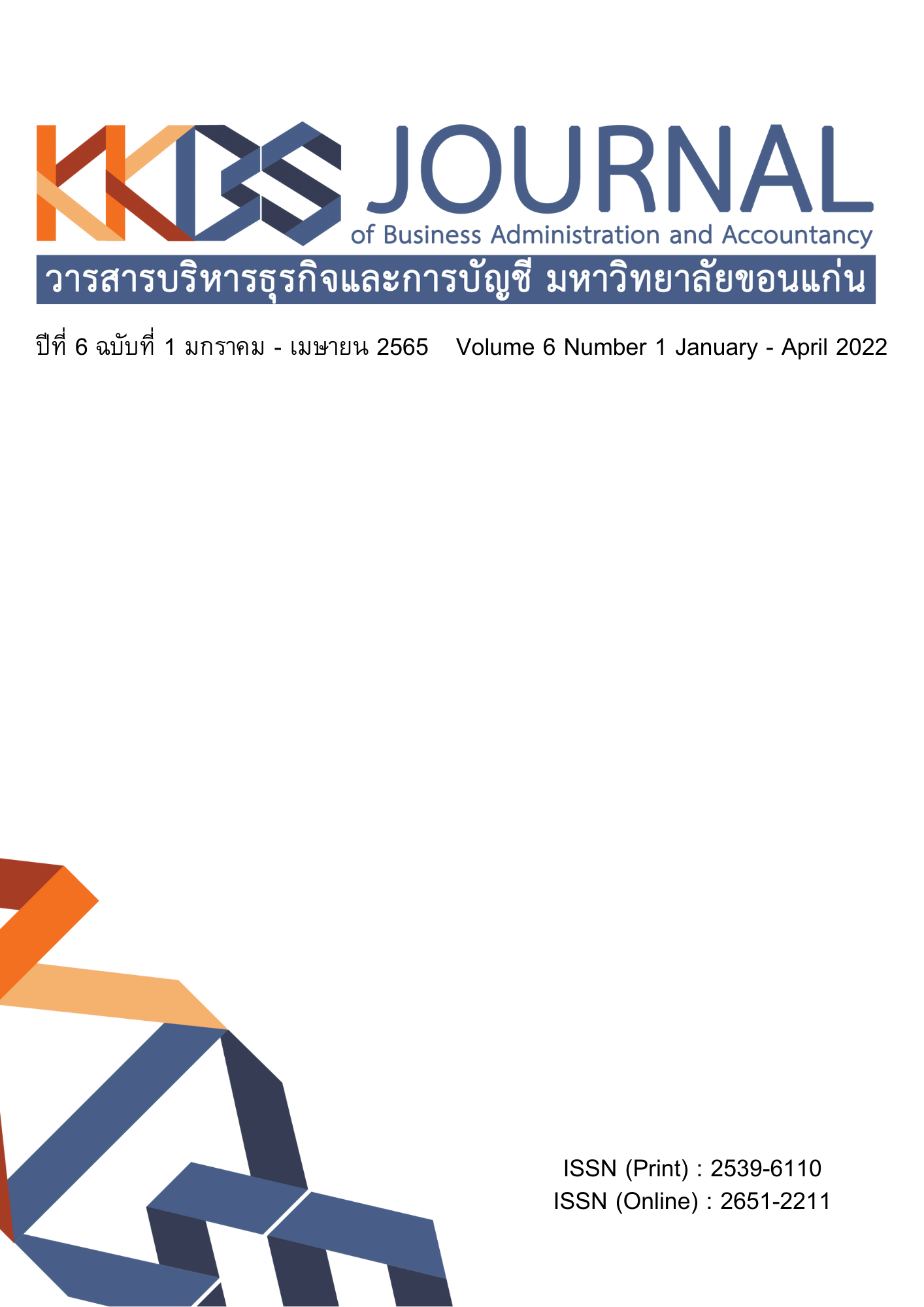Factors Affecting the Salable Area of Residential Condominium Project
Main Article Content
Abstract
The development of residential condominium projects is becoming more popular in Bangkok and vicinity. This is due to the development of the electric train network resulting in more convenience of the transportation in those areas and the amendment of town planning law which essentially supports the urban expansion. In addition, the change in living behavior from houses in the suburb area to condominiums in metropolitan area with the purpose of saving transportation time and travel expense is also considered as another important reason impacting this trend. As mentioned previously, those reasons considerably affect to the larger investment of area developments. Accordingly, most developers are determined to indicate the number of usable area contributing to the most suitable salable area. This research aims to study various factors related to the salable area in order to analyze mathematical ratios of necessary information so as to determine the project layout and the correlation between those factors and salable area. This research has collected data from condominium projects (high-rise buildings) in Bangkok and vicinity and interviewing experts in many perspectives with regard to the design of each area. The result shows that there are 11 factors significantly related to the salable area, namely Construction Floor Area (CFA), Ground Floor Area (GFA), building height, the number of floors, the number of rooms, average room area, indoor parking area, common area, green area, the number of parking slots and the number of elevators. The methodology of this research is to analyze the critical ratios and correlation between all related factors and the salable area by way of multiple regression technique. It is clearly found that the number of salable area is significantly proportional to the number of parking slots, the number of rooms and the number of floors, respectively. Finally, the results of the research suggest how to apply the project information as a guideline for future real estate project development.
Article Details

This work is licensed under a Creative Commons Attribution-NonCommercial-NoDerivatives 4.0 International License.
The articles published in the journals are the authors' opinions, not the opinion of the editorial team or administrative staff. The articles published is copyright of the Journal of Business Administration and Accounting, Khon Kaen University.
References
Bandara, D. et al. (2020). An investigation on community spaces in condominiums and their impact on social interactions among apartment dwellers concerning the city of Colombo. Social Sciences & Humanities Open, 2(1), 100043.
Belcher, R.N. et al. (2019). Shared landscapes increase condominium unit selling price in a high-density city. Landscape and Urban Planning, 192, 103644.
Blackwell, M. (2017). Marlon Blackwell Architects. Retrieved December 10, 2018, from https://www.marlonblackwell.com/media/
Chan, E.H.W., Tang, B.S. & Wong W.S. (2002). Density control and the quality of living space: A case study of private housing development in Hong Kong. Habitat International, 26(2), 159-175.
Fan, K., Qian, Q.P. & Chan, E.H.W. (2015). Floor area concession incentives as planning instruments to promote green building: A critical review of international practices. Pretoria, South Africa: Smart and Sustainable Built Environments (SASBE).
Gillad, R. & Alan, W.. (2013). Rising cities: Condominium development and the private transformation of the metropolis. Geoforum, 49, 160-172.
Hinkle, D.E., Wiersma, W. & Jurs, S.G. (1998). Applied statistics for the behavioral sciences. 4th ed.
New York: Houghton Mifflin.
Jeewasuwan, E. (2010). Business plan for real estate development on small-size land in Urbanized Area of Bangkok. Bangkok: Thammasat University. (In Thai)
Kaur, J. & Narayan, N. (2017). Live ability in high rise apartments through open spaces. International Journal of Civil Engineering and Technology, 8(5), 1295-1301.
Kittiadisorn, T. (2008). Condo. Retrieved December 10, 2018, from http://www.royin.go.th/?knowledges=คอนโด-๒๒-เมษายน-๒๕๕๑. (In Thai)
Klinchuanchun, P. (2018). Krungsri research: Industry outlook 2018-2020: Housing in BMR. Retrieved January 15, 2019, from https://www.krungsri.com/ (In Thai)
Mihoko, M. et al. (2020). Impact of gentrification on travel behavior in transit-oriented development areas in Bangkok, Thailand. Case Studies on Transport Policy, 8(4), 1341-1351.
Research Development of Knight Frank Thailand. (2018). Knight Frank Thailand open data overview of the condominium market in the first quarter of 2018. Retrieved October 10, 2018, from https://thailand-property-news.knightfrank.co.th/ (In Thai)
Saeed, A.A. & Mullahwaish, L.T. (2020). Effect of green areas density on real estate price in Ramadi City. International Journal of Design & Nature and Ecodynamics, 15(2), 253-259.
Sirijanusorn, A. (2012). Innovative real estate development: Real estate project development process, Chapter 1. For Quality Management, 19(182), 16-17. (In Thai)
Tangmatitham, P. (2010). Secret of Supalai +Real estate. Bangkok: I.N.K Graphic Design & Print. (In Thai)
The Association Siamese Architects under Royal Patronage. (2017a). Ministerial regulations No. 7 (B.E. 2517). Retrieved April 5, 2019, from http://asa.or.th/laws-and-regulations/cba/ (In Thai)
The Association Siamese Architects under Royal Patronage. (2017b). Ministerial regulations No. 33 (B.E. 2535). Retrieved April 5, 2019, from http://asa.or.th/laws-and-regulations/cba/ (In Thai)
The Building Inspectors Association. (2017). Condominium Act B.E. 2522. Retrieved December 10, 2018, from http://web.krisdika.go.th/data/law/law2/%A404/%A404-20-9999-update.pdf (In Thai)
Vanichbuncha, K. & Vanichbuncha, T. (2018). Using SPSS for Windows in data analysis. Bangkok: 3 LADA Limited. (In Thai)
Yotsawat, S. (2018). “Good common area, we can choose” Retrieved April 15, 2018, from https://thinkofliving.com/article/ (In Thai)
Zalejska-Jonsson, A., Lind, H. & Hintze, S. (2013). Energy-efficient technologies and the building’s saleable floor area: Bust or boost for highly-efficient green construction? Buildings, 3(3), 570-587.


